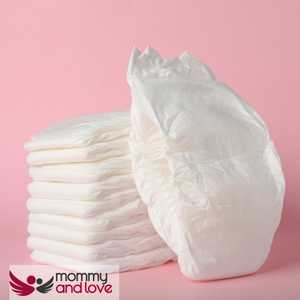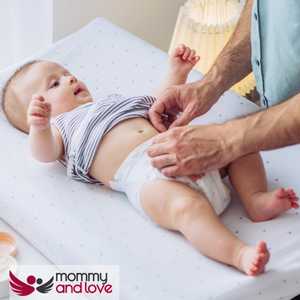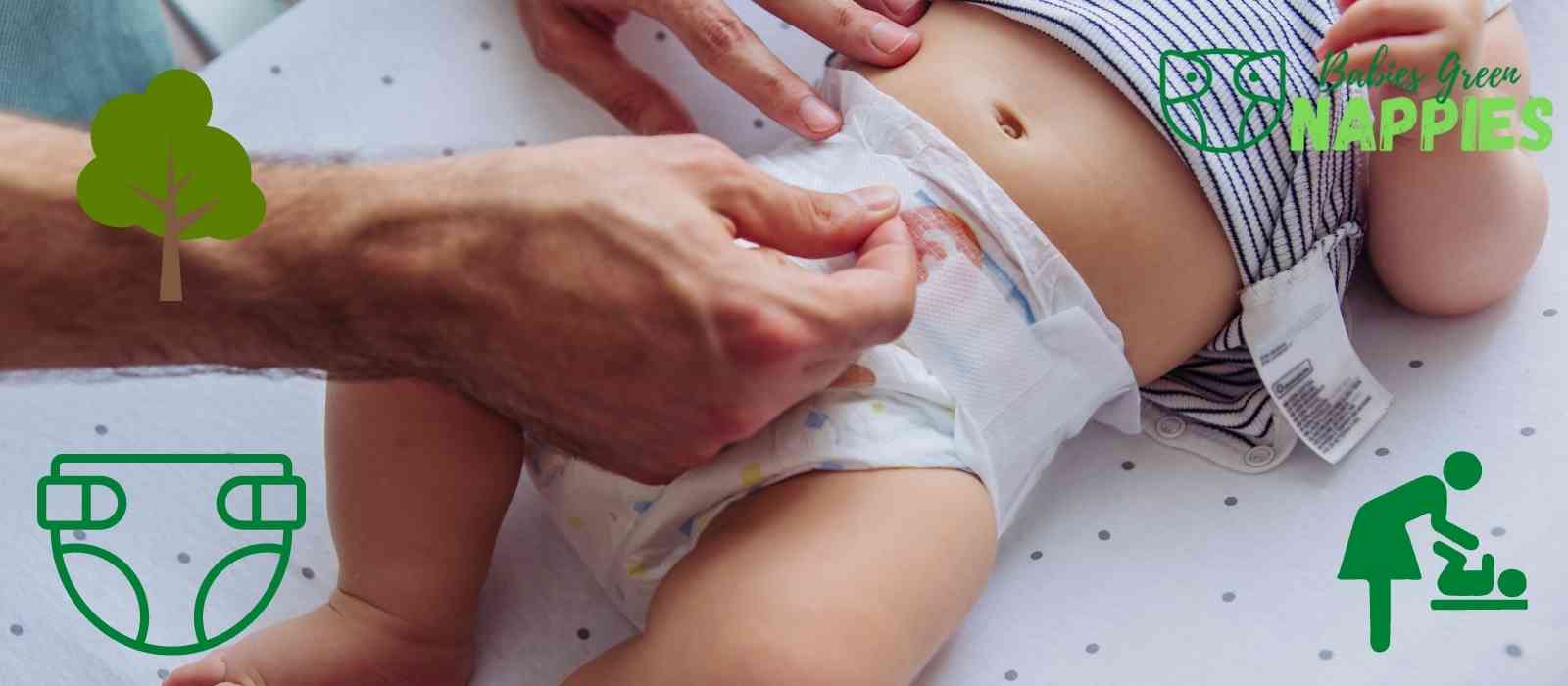When it comes to choosing the best diapers for your baby, safety is always a top priority. That’s why EWG has created a list of the safest and best-performing disposable diapers on the market.
All of the diapers on this list have been verified by EWG as being free from harmful substances as well as toxins. So, if you’re looking for a safe and healthy diaper option for your child, look no further than EWG Diapers!
Who Is EWG and What Do They Do?
The Environmental Working Group (EWG) is a nonprofit, nonpartisan organization that specializes in research and advocacy around toxic ingredients and their effects on public health. As an organization, the EWG attempts to fill gaps in consumer product testing by providing up-to-date analysis of items that should be regulated more strictly.
EWG is well-known for its “Dirty Dozen” list, which ranks the most pesticide-laden produce items.
What Does EWG VERIFIED Mean?
An EWG-certified product is one that meets the organization’s rigorous ingredient and full transparency requirements.
To be verified, consumer products must disclose all of their ingredients on the label or online, and those ingredients must be assessed for safety by EWG.
What are EWG diapers?

EWG diapers and wipes are the safest and best option for your children. Only diaper products that meet rigorous ingredient disclosure receive the EWG VERIFIED mark.
An EWG nappy is the gold standard in the health and wellness space. When you choose an EWG nappy, you can be sure that you are getting the highest quality product possible and you are giving your children a healthy start in life.
EWG has a rigorous evaluation process and strictest standards that look at every basic ingredient information in a nappy product. They also look at transparency, meaning how easy it is for parents to understand what is in their child’s diaper and holds companies to a higher standard.
This way they support and help consumers to make a conscious decision when buying products.
Only products that meet EWG’s strict standards receive the EWG VERIFIED mark.
What Are the Benefits of an EWG Diaper?
The average baby will go through about six thousand diapers in their first two years. That’s a lot of exposure to materials that have the potential to cause health problems.
An EWG VERIFIED baby essential is the gold standard in the infant’s health and wellness space. When you see this mark on a disposable diaper, you can be sure that it doesn’t contain any harmful chemicals that can irritate your baby’s skin.
In fact, many of the nappies and baby care products that carry the EWG VERIFIED mark is made from organic ingredients, which makes them safer for your baby and better for the planet.
Why Every Parent Should Be Concerned About Disposable Diapers?

Nappies are a huge part of a baby’s life and it’s no secret that disposables contain substances and materials that can be harmful to both babies and the environment.
But what most parents don’t know is that there are safer, more environmentally friendly options available.
EWG nappies are one such option – they’re made of plant-based materials and use non-toxic adhesives, so you can rest assured that your children are wearing a diaper that’s gentle on both their skin and the planet.
A newborn’s skin is considerably thinner and more sensitive than that of an adult, allowing it to absorb particular substances more readily. The area around a baby’s genitals is significantly thinner and more vulnerable to exposure to potentially dangerous substances such as dyes, chlorine, and phthalates, which are all included in nappies.
The anatomy of a diaper is described in EWG’s report, including the various ingredients that are utilized.
The primary components of modern disposable nappies are the topsheet, backsheet, absorbent core, leg cuffs and closing system.
Topsheet and Backsheet
The topsheet and backsheet are the visible layers on the outside and inside of a diaper. They are made of plastic polymers. These are frequently made with phthalates which is a type of plasticizer chemical.
They are often used to improve the flexibility of plastic polymers and have been found in diapers and wipes in several studies.
Phthalates are known endocrine disruptors, which can interfere with the normal function of the hormone system. Various researches have associated them with reproductive disorders such as low sperm count and hypospadias which is a male birth abnormality.
Absorbent Core
The super-absorbent polymer (SAP) within the diaper absorbs up to 30 times its weight in urine. They are considered the most important component of a diaper because they protect babies from wetness.
One of the most frequent SAPs found in nappies is sodium polyacrylate. Depending on how this polymer is made, it may contain traces of acrylamide and acrylic acid. Acrylamide has been linked to cancer in people while acrylic acid is considered a severe skin and eye irritant.
There are some things that you just don’t want in the nappies you stock up on for your baby—like chlorine. That’s because it is a harsh chemical often used in the manufacturing of diapers to create super-absorbent polymers (SAPs). And when babies wear diapers containing SAPs, they can have skin irritation and rashes.
You may have heard that chlorine bleaching is “safe,” but the truth is most nappies use the elemental chlorine-bleached pulp, which produces toxic byproducts called dioxins.
Dioxins are known to be carcinogenic and disrupt the endocrine system, which regulates hormones. Because an infant child is still developing, this can be especially dangerous for her.
First off, they are cheap to produce. Many diaper companies use these wood pulp SAPs because it’s inexpensive. Secondly, some companies may not realize that there are other options out there—or they haven’t considered how much healthier it is for babies not to wear diapers with chlorine.
It’s important to note that most diaper makers include additives in their SAPs. Ingredient lists are not always on the packaging. And unfortunately, since they are not required to disclose the ingredients in their diaper products, we’ll never know what these additives are. This is a sign that the diaper industry should be properly regulated.
Adhesives
Adhesives are used to build the majority of disposables. Several layers are glued together to form the backsheet, absorbent core, and topsheet components. Depending on the glues used, they could be one of the primary producers of VOCs in diapers.
Alkylphenol ethoxylates, or APEOs, optical brighteners and alkylphenol derivatives are common ingredients in many adhesives. These antioxidant compounds are added to glues to prevent oxidation, which reduces the adhesive capabilities of the glue.
Wetness Indicators
Many parents have safety concerns about the wetness indicators in disposable nappies as well. They’re used to serve to be a sign that a diaper needs to be changed to make diaper changes easier.
Unfortunately, they are made with a dye or pH indicator that changes color when it comes into contact with urine, but this necessitates the use of ingredients like quaternary ammonium compounds, which have been linked to reproductive and developmental issues, and halogenated organic compounds, which persist and harm the environment.
Fragrances and Scents
Fragrances and scents in diapers are bad for your child. It’s not just because they bother you, it’s because they bother your little one.
Diapers are made to be breathable so that air can move through the diaper, but still, keep waste contained. Unfortunately, fragrances and scents in the diaper can prevent this from happening. That means the odor from a scented diaper may actually be staying closer to your baby’s skin, rather than being vented away from their skin, making them a major safety concern.
Diaper rash is already a problem for many kids, but if the airflow is blocked by fragrances and scents, it can easily get much worse.
What’s more, some fragrances and scents used in diapers are toxic or allergenic. The fragrance industry puts very few restrictions on what ingredients they use in products like diapers and soaps.
Are Ewg Diapers Worth It?
Yes. Babies deserve better because most of them have very sensitive skin. And in this day and age, we should protect our children from harmful ingredients and make a conscious decision to buy products that are made from sustainable materials and renewable resources and that include baby disposable nappies.
By going the environmentally-friendly route, we can make small yet meaningful changes that can help us reach our ultimate goal of saving our environment.
At the present, there are only a few diapers that are EWG verified. The first EWG verified diaper is the Healthybaby diapers.
These diapers are considered some of the safest diapers for kids. Healthybaby diapers are made from high-quality ingredients such as soft organic cotton material to keep your baby comfortable and they are made using proprietary manufacturing processes to make them as effective as other brands in keeping your child dry.
Plus, they are made in a carbon-neutral facility! Aside from nappies, they also offer wipes and other baby essentials.
If I Can’t Find an EWG Verified Diaper Brand, What Other Diaper Brands Are Considered Eco-Friendly?
A single brand that is gaining popularity among eco-conscious parents is Seventh Generation. Seventh Generation diapers are chlorine-free, fragrance-free, latex-free, and petroleum-based lotions.
Best of all, they provide superior absorbency and the ability to wick moisture to prevent rashes as well as a soft, cloth-like material for added comfort and support for your child.
Seventh Generation diapers are not entirely made from plant-based materials but they are the closest you can get if you’re looking for a more eco-friendly diaper than your usual diapers.
Seventh Generation also uses fluff pulp that is responsibly sourced from Scandinavian forests. They stay away from old-growth forests since they are protected.
Seventh Generation diapers, like most disposable diaper designs on the market, are not biodegradable and cannot be composted. Many of the materials utilized are synthetic and will not deteriorate in nature.
The vast majority of diapers wind up in a landfill, where they will not biodegrade, even if they were designed to.
Besides diapers, they also offer baby wipes and other babycare essentials.
Are There Cloth Diapers That Are Ewg Verified?
Currently, there are no cloth baby diapers that are EWG verified. But using cloth baby diapers is better for your baby’s sensitive skin and the planet than disposables. That is why they are reusable and much more comfortable for children.
In addition, they are made up of natural fiber and thus, do not cause any harm to the baby’s sensitive skin. They are also better for the planet than disposables because they can be reused and hence, reduce waste.
The cost of cloth baby diapers is high but if you use them for more than one child then their long-term cost is low when compared with disposables. They help you save money and they are less likely to cause diaper rash.
Also, some parents prefer to use cloth baby diapers because they don’t contain chemicals that may be harmful to babies skin.
Take Away on EWG Diapers
Disposable nappies may be convenient, but they come with a cost to both your child and our planet. EWG diapers are not only safer for your baby’s sensitive skin but also more environmentally friendly than other disposable diaper brands.
So the next time you need diapers for your baby, our advice is to look for ones that have the EWG verified seal and always check the material lists on the packaging.
Are EWG diapers worth it? In our opinion, yes. While there are other eco-friendly diaper brands on the market, we believe that Healthybaby diapers are the best option and fill the checkboxes for parents looking for an environmentally friendly and safe disposable diaper.
Seventh Generation diapers and Pampers Pure diapers (their baby wipes are EWG certified) are also great choices, but they are not biodegradable.





